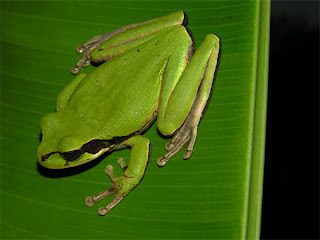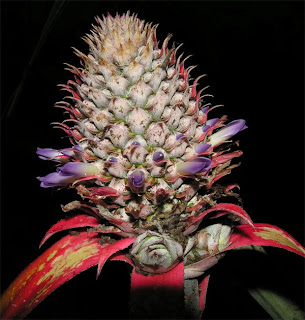
One might think - as Costa Rican government officials (from the municipality of Golfito and... believe it or not... the ministry for energy and the environment) overseeing the said development at Preciosa and Platanares beaches clearly did - what difference do a bunch of outsized spiny pineapples make? Well, apart from their intrinsic natural beauty, and the fact these plants help to buffer the coastline,
Bromelia plumieri (Bromeliaceae) forms dense, at times almost unpenetrable stands, creating a micro-habitat that provides shelter and protection to a variety of local fauna, such as this fabulous Black Iguana (
Ctenosaura similis) known locally as "Garoba", that we found amidst one of the mountains of now destroyed bromeliads.










